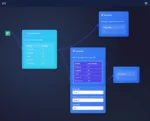Imagine a digital ecosystem where applications respond to business events instantly, where data is always consistent and traceable, and where scaling horizontally is the norm, not the exception. At Dev3lop LLC, we thrive at the intersection of agility, analytics, and engineering innovation. Event-driven microservices, underpinned by persistent logs, have revolutionized how leading organizations achieve these goals, turning bottlenecks into breakthroughs. In this article, we’ll dissect how this paradigm empowers modern enterprises to act on insights in real time, increase system resilience, and future-proof their architecture—all while serving as a launch pad for business growth and innovation.
The Strategic Advantage of Event-Driven Microservices
In the dynamic landscape of digital transformation, microservices have emerged as the architectural backbone for organizations seeking rapid innovation. However, traditional request-driven approaches often cause brittle integrations and data silos, restricting scalability and agility. Enter the event-driven microservices model; here, systems react asynchronously to events—such as a new customer signup or an inventory update—resulting in a more decoupled and scalable ecosystem.
Persistent logs are the silent heroes in these architectures. They not only preserve every business event like a journal but also unlock the potential for robust analytics and auditing. Leveraging event logs facilitates data integrity with advanced SQL server consulting services, allowing you to address business requirements around traceability and compliance. When your systems are event-driven and log-reliant, you future-proof your IT and data teams, empowering them to integrate novel services, replay events for debugging, and support ever-evolving analytics needs. This is not just about technology, but fundamentally reimagining how your organization creates and captures value through real-time insights.
Driving Data Consistency and Analytical Power with Persistent Logs
Persistent logs are more than a backbone for microservices—they are central to unlocking total data lineage, version control, and high-fidelity analytics. By storing every change as an immutable sequence of events, persistent logs make it possible to reconstruct current and historical system states at any point in time. This capability is critical for organizations seeking to implement robust slowly changing dimension (SCD) implementations in modern data platforms, and empowers analytics teams to perform forensic investigations or retroactive reporting without disruption.
Perhaps more strategically, persistent logs allow for data versioning at the infrastructure level—an essential ingredient for organizations exploring comprehensive data version control as a competitive advantage. Imagine launching a new service and safely replaying events to populate its state, or resolving issues by reviewing a granular, timestamped audit trail. When combined with semantic versioning, as discussed in this deep dive on schema and API evolution, persistent logs create a living, resilient record that enables true agility. This is the engine that drives reliable data workflows and breakthrough analytics.
Architectural Patterns and Implementation Considerations
Implementing event-driven microservices with persistent logs isn’t just a technical choice—it’s a strategic roadmap. Architectural patterns like event sourcing and Command Query Responsibility Segregation (CQRS) use logs as the source of truth, decoupling the write and read models for greater flexibility and scalability. Selecting the right log technology—be it Apache Kafka, Azure Event Hubs, or bespoke database approaches—depends on your needs for consistency, throughput, and integration with enterprise systems.
Choosing the best approach should factor in your existing ecosystem and integration requirements. Organizations comparing open source and commercial ETL solutions should also consider how ingestion pipelines and microservices will interact with these persistent logs. Thoughtful attention must be paid to data type handling—overlooked integer overflow issues can cripple analytics. That’s why working with a consultancy experienced in both grassroots and enterprise-grade deployment is critical. The right partner accelerates your transition, builds resilient patterns, and ensures your event-driven future is both robust and innovative.
Unleashing Business Growth and Innovation with Event-Driven Analytics
Event-driven microservices aren’t just about system performance—they’re a catalyst for business transformation. By unlocking granular, real-time data, persistent logs fuel data-driven decision making and create new possibilities for customer experience optimization. With the ability to correlate, enrich, and analyze data streams as they happen, organizations can harness the power of advanced analytics to drive strategic growth and outpace the competition.
When designed thoughtfully, event-driven architectures with persistent logs allow organizations to create feedback loops, respond instantly to emerging trends, and test innovations with minimal risk. As these systems evolve, the insights derived—not just from the data, but from how business events are recorded and acted upon—become invaluable assets. This is not just a technical evolution; it’s a new standard for agility and competitive advantage across industries.
Tags: event-driven architecture, microservices, persistent logs, data analytics, data version control, business innovation
Thank you for your support, follow DEV3LOPCOM, LLC on LinkedIn and YouTube.

























